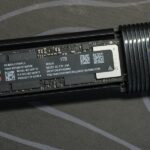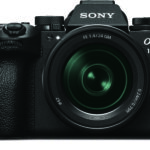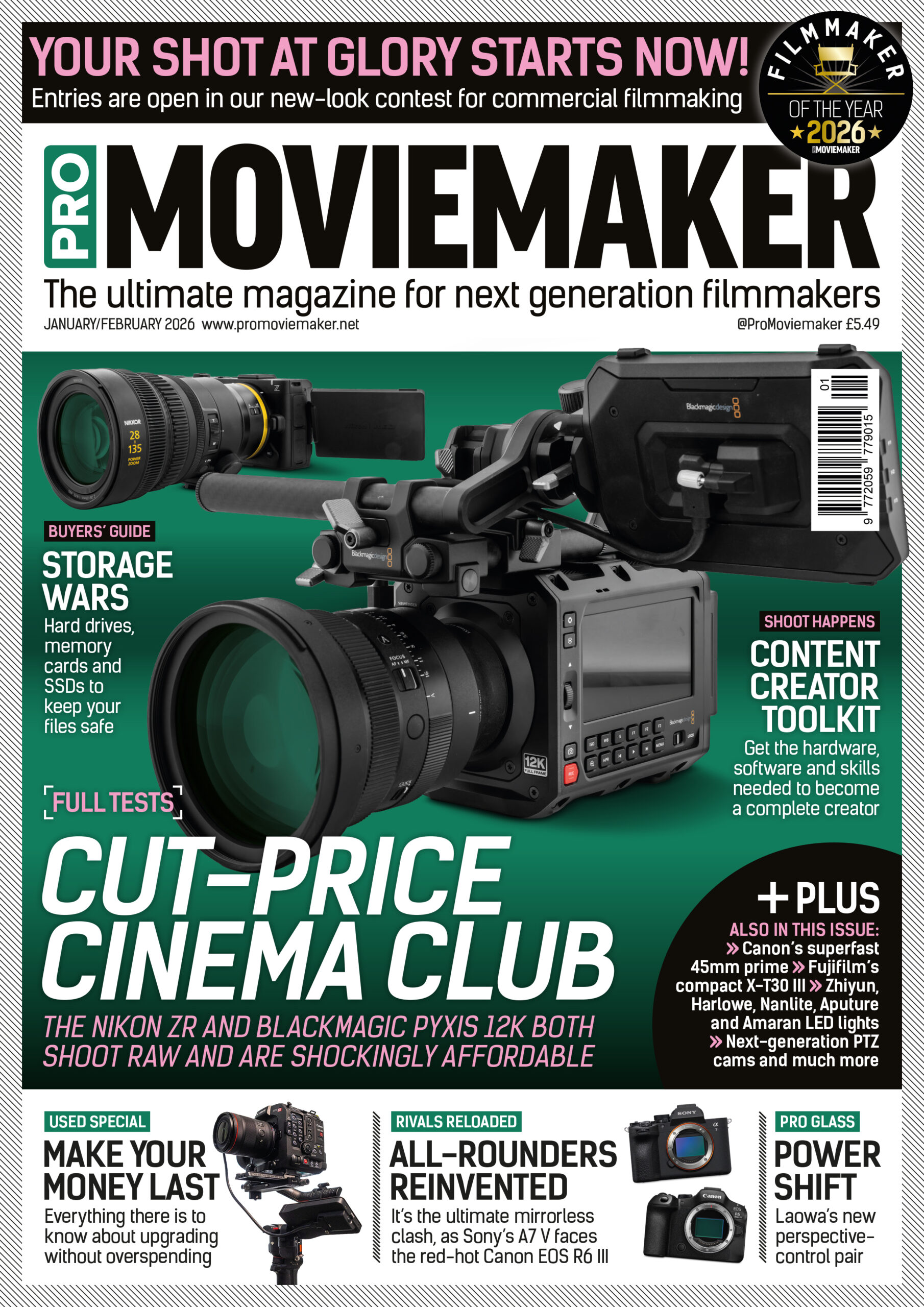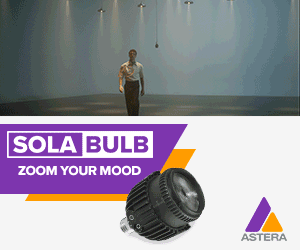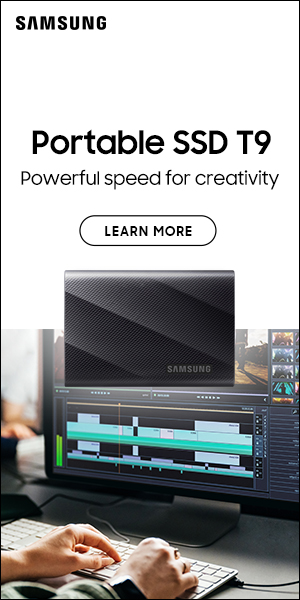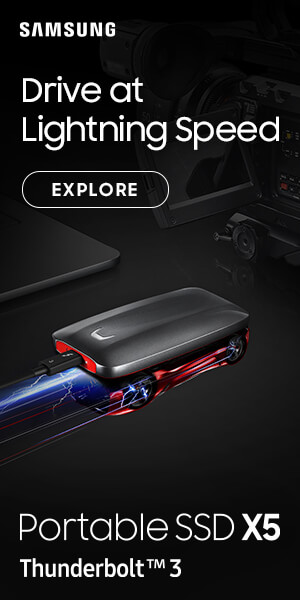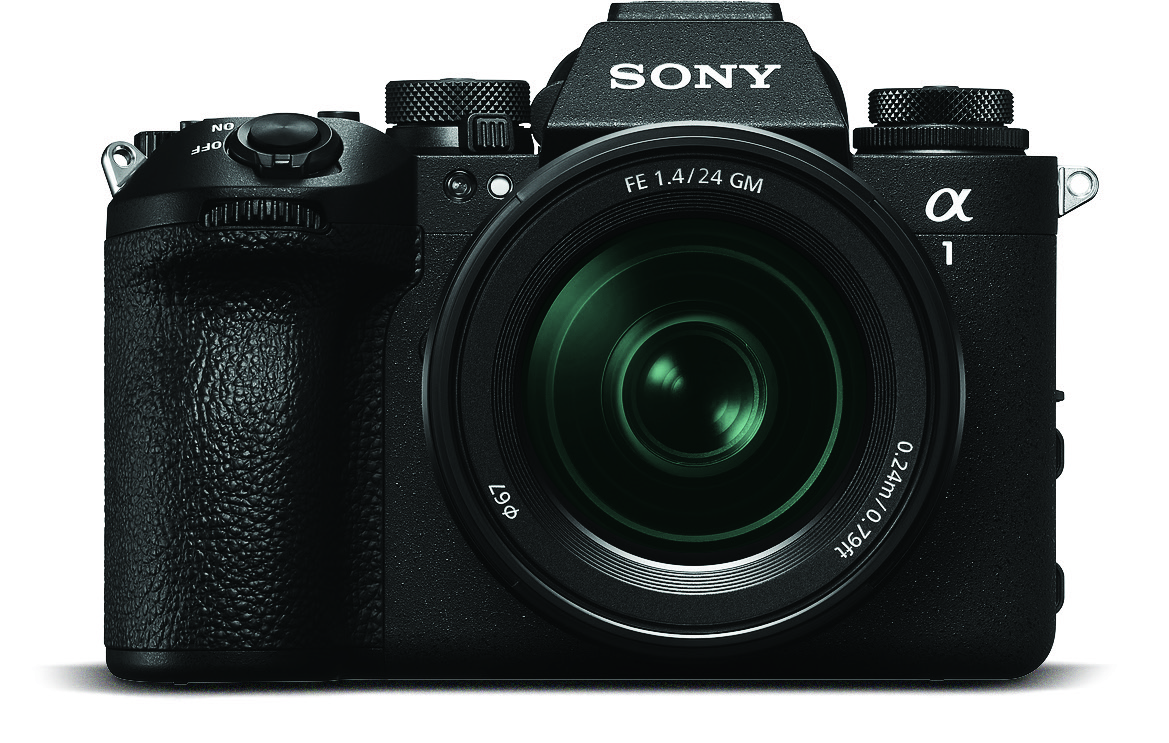
Big test: Sony A1 II
Posted on May 2, 2025 by Pro Moviemaker
Alpha bet pays off
Sony bet big by sticking with the four-year-old A1’s sensor – but with improved AF and handling, the Mark II is set to outshine its predecessor
Words Adam Duckworth
When we tested the Sony A1 at launch back in 2021, we highlighted its appeal for pros shooting both video and stills – especially of fast-moving subjects. It offered high resolution for detailed stills as well as impressive frame rates and awesome AF for fast-paced work. With 8K video spec that exceeded even the A7S III, it was the perfect buy for anyone who blends both moving and still images. The A1 was the ultimate do-everything mirrorless – if you could afford it.
Four years on, and the Mark II version is here. At first glance, it seems to be far from a huge leap ahead. It retains the 50.1-megapixel full-frame sensor of the original A1, as well as all its codecs and frame rates – though with slightly improved image clarity at mid-to-high sensitivities. But you need to really pixel-peep to notice this.
The big news is the AI processing unit, which brings advanced subject recognition that newer but lesser Sony cameras already have, plus features from the recent A9 III sports camera. This includes stills pre-capture of up to one second and an improved, ergonomically designed body including a fully articulating screen replacing the old tilt-only version. There’s an upgraded IBIS system, enabling an improvement to 8.5 stops in the centre and seven stops at the periphery when shooting still images, plus a new Dynamic Active mode for video.
The camera’s new four-axis 3.2-inch LCD monitor is just one of several design updates, alongside an improved grip, repositioned shutter button, refined custom buttons and an optional deep, padded eyepiece cup. Additionally, the A1 II now includes a charger that juices up to two Z batteries simultaneously in 155 minutes. A new real-time image-transfer solution supports 2.5GBase-T via wired LAN. When paired with Sony’s 5G portable data transmitter, files can be sent over high-speed 5G. Data can also be automatically transferred to Adobe Lightroom or Google Drive via Sony’s Creators’ Cloud storage service. The camera is priced at £6299/$6498 – slightly less than the A1 at launch.
That might not sound like a whole lot of improvements – certainly in the actual images produced, despite four years of development – but it makes a real difference in handling. The AI II remains the best E-mount camera for high-resolution stills and no-compromise video in the same body.
The camera can shoot photos at up to 30fps blackout-free and track complex movements, thanks to the stacked sensor technology. For video, it retains 8K/30p and 4K/120p 10-bit recording like its predecessor, or 240fps in HD, with minimal rolling shutter artefacts. The fast readout helps with that and also provides a fast 1/400sec flash sync.
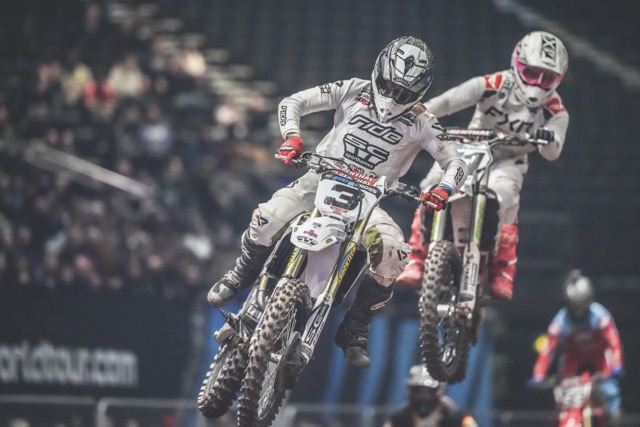
In terms of image quality, the TIPA rating is 77 for stills and 85 for video – the highest in both categories among the four cameras we tested. In fact, the video score is the highest TIPA has ever recorded, though it’s slightly skewed towards high-resolution cameras. When it comes to real-world use, lower noise and more accurate colours with rich, detailed files are more practical, as few need to shoot in 8K. But if you do, whether for heavy cropping or future-proofing, 8K is available at 200Mbps and 400Mbps – although it’s limited to 30p.
If you’re after the most detailed 4K footage possible, shooting in 8K and downsizing to 4K in edit is the way to go. However, this does mean it takes up more memory – and the frame rate options are once again limited to 30p.
It’s best to shoot the camera in native 4K mode, where there are far more options in terms of compression, codec and frame rates. It records 4K at 60p full-frame with no crop internally in 10-bit 4:2:2, with no recording time limitations, and all AF functions remain active. The camera also shoots 120fps 4K internally, with a slight 1.13x crop and records 240fps in HD, though there is no audio.
There are a huge range of HD and 4K options, available in 10-bit and 8-bit, 4:2:2 and 4:2:0 versions, with frame rates up to 120p in 4K and 240p in HD, in H.264 and H.265. To get 240fps, you use S&Q mode, which means no audio is recorded and the file is saved as a Quicktime movie file. When you play it back in camera, it’s already in slow motion.
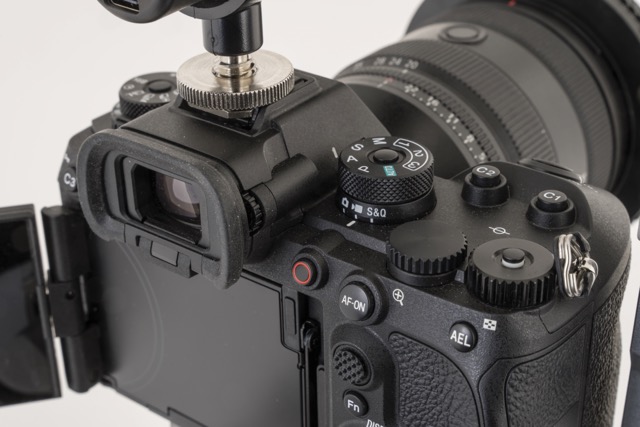
Unlike other manufacturers’ cameras, Sony still doesn’t offer internal Raw video. However, you can output up to 8K in 16-bit Raw over HDMI to an external monitor, allowing you to record in Raw, 12-bit Log ProRes Raw or ProRes.
There are S-Log2, S-Log3 and HDR options for maximum dynamic range, plus S-Cinetone, offering a cinematic look without the need for grading. S-Cinetone gives around a stop less dynamic range than S-Log3. There is a huge amount of dynamic range, especially in S-Log2, S-Log3 and HLG.
This is helped by the low-light performance. The ISO range spans from 100 to 32,000, expandable to 50 and 102,400. For both stills and video, the noise performance is excellent up to around ISO 6400. If you frequently need to go higher, a lower-resolution camera like the A7S III would be a better option.
The new AI processor has advanced subject recognition, including human pose estimation which detects a person’s head and torso. It also tracks animals, birds, insects and vehicles. And a new Auto mode can automatically identify the subject without needing to specify a subject mode. Give it a try – it works surprisingly well.
The old camera’s AF performance is still right up there with the best, and the new version moves iton once again. The AF system can be customised for smooth focus racking, allowing the focus speed to be adjusted from fast to slow, as well as how sticky it is before searching for a new subject. This performs well in both bright and low light. Touch-to-focus on the rear screen locks onto an object as it moves, but you must tap the screen to initialise the focus.
Of course, the stacked sensor and superfast processors mean that there is zero viewfinder lag or blackout: the only way to shoot stills of sports and fast-moving action to rival an optical viewfinder.
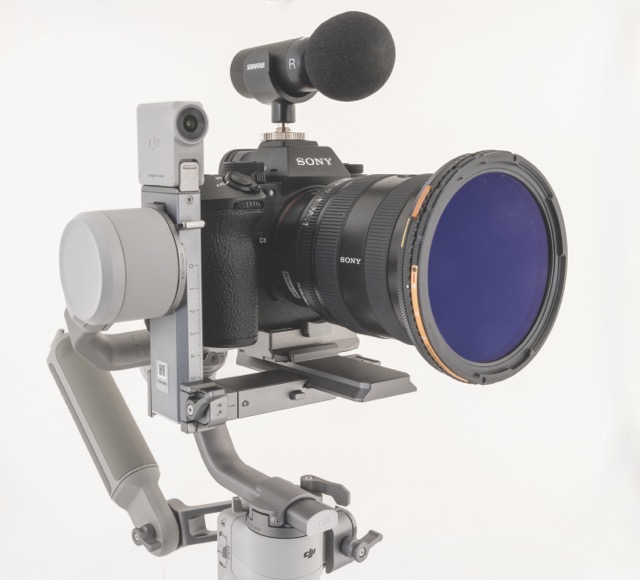
The electronic viewfinder is improved and, despite the tilting and folding screen, the camera is well weather sealed. But with all this techno wizardry inside, you’ll need at least one spare battery for a full day of shooting.
The camera boasts a pair of UHS-II SD card slots that also accept the new CFexpress Type A cards, which you’ll need to invest in to shoot 4K/120p, S&Q, All-Intra codecs and 240fps in HD. You can actually record 8K on V60-rated SD cards.
Its stills performance is amazing, with studio-quality files when you need them and high-resolution files at up to 30fps when you feel the need for speed. However, that frame rate is only with certain Sony lenses and with Compressed Raw or HEIF files. To shoot Uncompressed Raw or Lossless Compressed Raw, the max frame rate is 20fps – still plenty fast enough for most users.
To achieve maximum detail, the Pixel Shift setting takes four or 16 Raw shots, which are then combined into a 200-megapixel image afterwards in Sony software.
It’s amazing versatility like this and pretty much no compromises that make the Sony A1 II such a great mirrorless camera. Unless you have extremely specific needs, then it’s more camera than most creators will ever need.
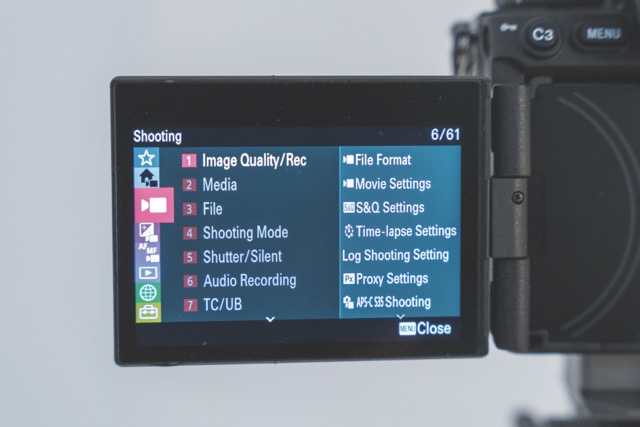
Specifications
- Price: £6299/$6498 body only
- Sensor type/size: 50.1-megapixel, stacked BSI CMOS, full-frame
- Shutter type: Focal plane mechanical, plus rolling electronic
- Max stills frame rate: 30fps with e-shutter, 10fps mechanical
- LCD: Four-axis tilting 3.2-inch touchscreen LED, 2095k dots
- Viewfinder: Electronic OLED, 100% coverage, 9437k dots, 240fps
- Formats: 8K/30p 4:2:0 10-bit. 4K up to 120p, FHD to 240p, 10-bit 4:2:2 internal capture up to 600Mbps in H.265/All-I H.254. Raw 16-bit 4.3K, 4K/60p 4:2:2 10-bit, 8K/30p, 4K/60p 4:2:0 8-bit recorded external via HDMI
- Storage: 2x CFexpress Type A or SD/SDHC/SDXC card slots
- Dimensions (wxhxd): 136.1×96.9×82.9mm/ 5.4×3.8×3.3in
- Weight: 743g/1.6lb body only
The verdict
Sony reaffirms that mirrorless cameras should be portable, even with its flagships. While Nikon and Canon opt for large, pro DSLR-style bodies, Sony keeps things compact. For extra battery life or better vertical shooting, an optional battery grip offers an affordable solution.
The benefit of being able to strip the camera down to something smaller and lighter means it’ll work better on gimbals.
The A1 II builds on its predecessor with significant improvements in handling and AF, all while maintaining its image quality. It topped our TIPA tests for stills and video.
While improved handling makes it ideal for video use – fitting nicely into rigs and gimbal set-ups – pro stills shooters who prefer a deep-grip, DSLR-style design may lean towards Canon or Nikon. For E-mount users, the A1 II remains the best option.
TIPA rating
Video image quality: 85
Photo image quality: 77
Features: 9
Has it all except for waveform monitoring or internal Raw
Performance: 10
Amazing video and photos from a camera that covers all bases
Handling: 9
Handling improvements pay dividends
Value for money: 8
It’s the price of camera and media that holds it back
Pro Moviemaker overall rating: 9/10
A stunning all-round camera that just about does the lot
- Pros: 10-bit 4:2:2 4K/120p, 240fps HD and 30fps stills
- Cons: No internal Raw recording
This review was first published in the May/June 2025 issue of Pro Moviemaker

